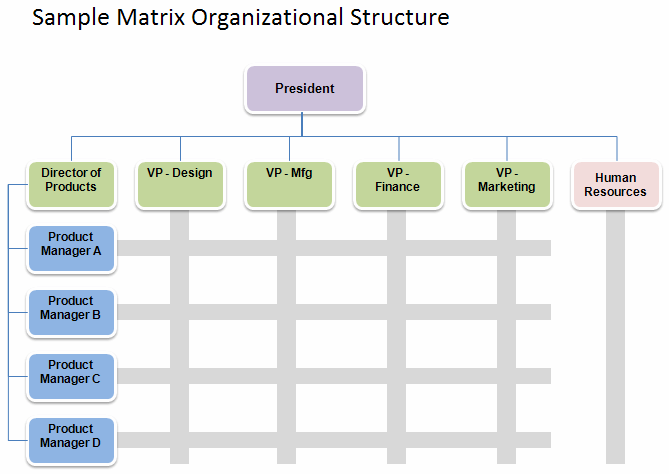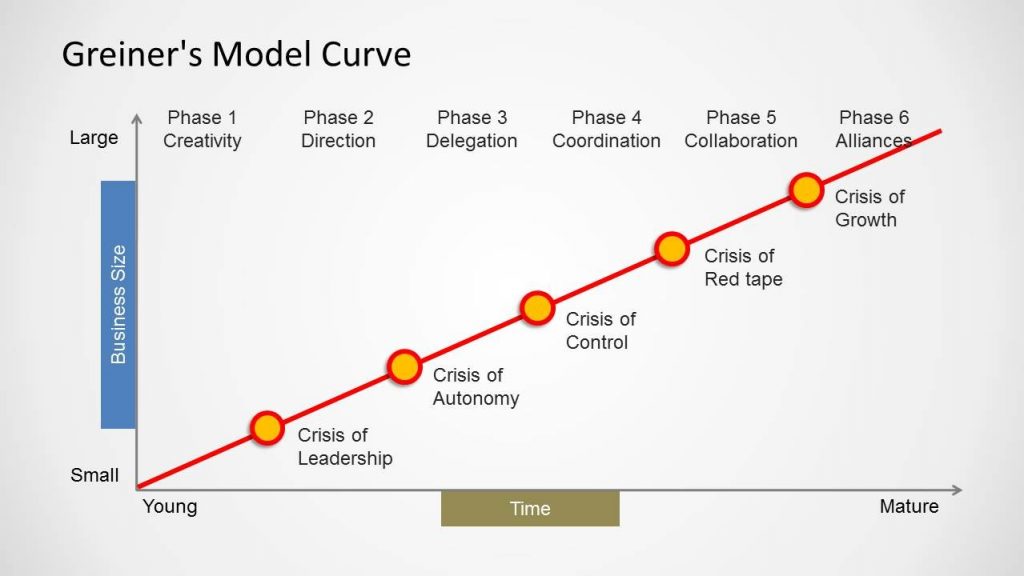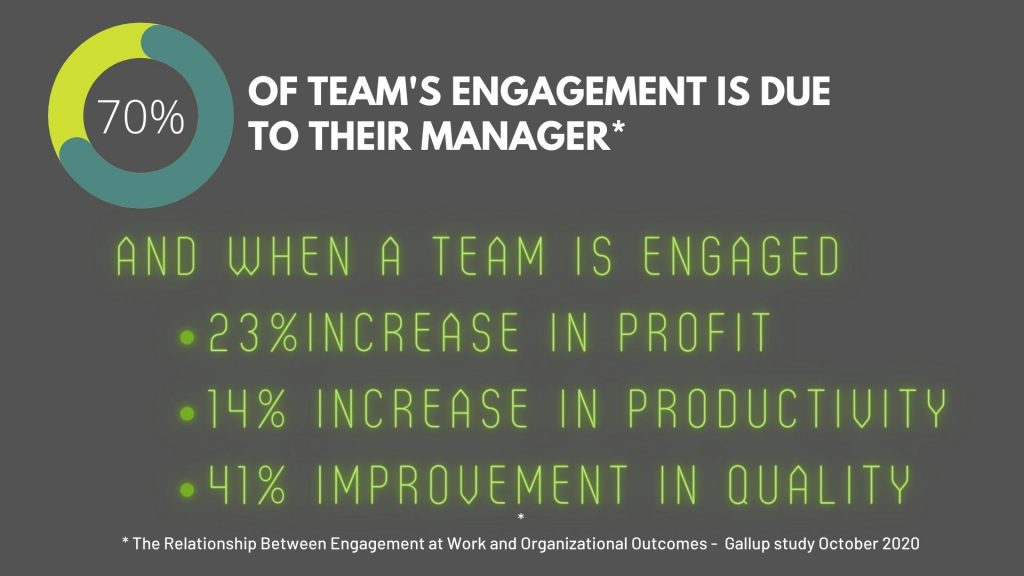
Who thought putting a person on the moon could be so complicated? Apparently, the people who actually did it. In fact, things got so complex organizationally in the space program in the 1960s that they invented the infamous matrix organization. Growing up in the aerospace industry, I can attest that it is still alive and kicking more than 50 years later. It answered a problem of the day, which was how to organize projects efficiently while maintaining a sense of belonging and accountability in different companies and specialties across a very large project. But it can be hell for some who are stuck with multiple bosses, competing priorities. and fights between managers as to who has the final say on a particular decision.
One of my first roles was a Technical Systems Integrator; a fancy title for someone stuck in a matrix. I reported dotted-line to the Engineering Director of the Bombardier Dash 8 program and represented Stress, Weights, Materials, and Aerodynamics functions, but actually reported to the director of those engineering functions. I loved initially the dynamic of being on a leadership team of a project and representing very critical roles. But I came to be so frustrated so quickly. Engineering managers of those functions quickly resented me for pushing them to perform and challenging their priorities of my project over others that were happening concurrently. And my functional boss questioned my “loyalties” as I was challenging these people. My project leader and I worked well together but were frustrated when my departments weren’t supporting our needs and I was helpless to make any changes, fighting the inertia and pride of these established engineering leaders. I quickly became a messenger between the to heads who wouldn’t deal with each other directly.
So why does it persist if it’s so dysfunctional? Why do companies as they grow get drawn to reorganizing around projects and functions to solve the emerging problem of organizing more people around more complex projects? The appeal is to bring accountability for a project within a larger organization, while maintaining a functional direction for common skills, enabling efficiencies within those functions. I get it, on paper, it looks good. In practice it rarely solves both of those problems and often solves neither, increasing inefficiency and disengagement of all involved.
Two competing bosses, One frustrated employee, Zero accountability

For anyone who hasn’t lived inside the Matrix, an example is shown above. It is generally organized around functions and projects, so any given employee will have a functional boss and a project boss. There are many flavors of this layout, where some functions are kept outside the matrix, like HR as shown in the example above. The reason to keep some functions outside the matrix is usually that the group isn’t big enough or doesn’t split logically without massively duplicating functions at a level that doesn’t make sense. The functional leader is responsible for allocating resources to each project, skills and career development of the employees, and utilizing shared resources across projects where necessary. The project leader is responsible for using the assigned resources to achieve the goals of the project and managing the day-to-day activities and performance of the employees. The apparent advantages are that project leaders can focus on the execution of complex projects, unburdened by resource management, career, and employee development, and fighting for resources. Skills in the organization have a home to be grown, fostered, and maintained and duplication of skills across projects can be minimized.
A Helix organization is in my opinion the same thing with different labeling from McKinsey. They tried to overcome the pitfalls of a matrix organization by defining clearer and more distinct roles of the two bosses. Having lived in matrix organizations for a long time, it really is the same thing but idealizes the good nature and spirit of the people involved. You can try to separate people’s development from day-to-day activities, but inevitably the pressure of executing the business always takes over, and people take less time to invest in themselves.
In practice, the matrix usually fails in these objectives and in fact makes things worse for all involved. Companies are inevitably biased toward project execution (as the lifeblood of a company’s success is tied to revenue-generating activities first) so the functional leaders and skills and career development activities get shoved into the “important but not urgent” category of work. Functional leaders will fight for relevance by getting involved in project decision-making and leveraging their resource control to get a seat at the table for key decisions. And in the middle of it all the employee with two bosses struggles to perform while stuck in the middle of a power tug-of-war.
And worse than that, leaders can hide from accountability by having an easy scapegoat when problems arise: the project leader can blame the functional organization for providing sub-standard resources, or not having the skills required to execute, and the function leader can blame the project organization for lack of organization, structure or foresight in seeing problems or for improper use of the skilled resources provided. And because companies worry about execution first, the employees are driven to results at all costs, and their functional needs are cast aside when the schedules get late. Which happens every time.
When in Doubt, Reorganize
How companies when struggling with effectiveness, productivity, and complex project management assignments

The Greiner curve is a well-established model for how companies progress through the same stages as they grow and prosper, starting from the owner/entrepreneur start-up phase to the global, complex conglomerate of merged companies and partnerships. As a company matures and grows, it faces crises of productivity that are only solved by reorganizing and structuring activities to maintain control.
These are natural responses to the various issues that a growing organization faces. Small teams don’t need formal communication because they are all sitting next to each other, but large teams need formal channels to keep everyone in the loop. A company with one engineer doesn’t need to tell that person what to do, but when engineering has 50 people, standards are required to maintain the quality and consistency of design. And a team of one doesn’t need a leader, but a team of 50 sure does.
A matrix organization appears in some companies around Phase 4 or 5 when the bureaucracy is large and inefficient and multiple projects and sites exist. Leaders see these problems and believe that by providing a new structure with new roles and responsibilities, the inefficiencies can be mitigated. They believe the problems are a result of a lack of clarity in control and decision-making.
The real problem in inefficient organizations is inconsistency and lack of empowerment and overall poor leadership at every level. Most leaders in growing organizations grew from within, and lack formal knowledge on how to lead and motivate a team of people. I remember when I first took over the management of a team of people. I was 28 and ran a team of 20 engineers. And I had exactly ZERO hours of management training. I think my boss gave me a book called “The Managers Desk Reference”. I used my intuition and energy to compensate for a complete lack of knowledge and did the best I could. But most people will struggle in that scenario and as a result, most managers in growing organizations are mediocre at best, and destructive at worst. Executives then look at the situation and become uncomfortable giving power and autonomy to middle managers, lacking the trust and accountability needed to let them thrive. But they misdiagnose the problem as a gap in structure, thinking the scope is too big for their management team, and look to an organizational change to solve the problem.
Organization changes fix structures and rules but do nothing about the personal leadership, communication, empathy, and decision-making required to be successful in any leadership role. Instead, organizations need to focus more on creating great leaders at all levels, who are not only good project managers and technical people but can inspire, motivate and take care of employees’ needs. Then, give them power and autonomy to execute the best way possible, and hold them accountable for their results and people engagement equally.
Can you actually manage projects AND people??

I know, it’s a crazy idea. But it IS possible to care about business performance and the people in an organization. I firmly believe that everyone in an organization wants to do a good job, achieve what they are asked to do, and help a company succeed. Managers can learn to organize and lead the projects for which they are responsible and engage and motivate their people to grow in their technical skills. In fact, it’s essential you do both and they are linked. This Gallup survey draws a direct line between business revenue and profits and employee engagement. And employee engagement is directly linked to direct managers’ abilities.
After over 20 years of leading teams and learning and growing on this subject, I have seen the benefits of being focused on both people engagement and results. It is possible. And it begins with creating a mindset of trust. Trusting that your team wants to achieve and that your job as a leader is to discover what everyone on your team needs in order to be successful. Then going and making that happen.
This mindset is so rare today, however. It’s rare because managers are not taught to think this way. Most management training centers around command-and-control functions, organization projects, measuring performance, and correcting bad behavior. This is necessary to learn, but it is not enough. When you invest in your managers’ ability to not only manage the results of their function but the engagement of their people and the connection to the larger corporate vision and mission, then creating complex structures in an organization becomes less important.
How to create a well-functioning organization without a matrix
This Harvard Business Review article captures well the truth that effective organizations are more about the mindset of an organization rather than the structure. In truth, any structure to organize the business can work as long as you invest in your management organization’s ability to get results and take care of its people. If you want to escape from the torture and inefficiencies of large matrix organizations then focus on solving the real problems.
- Create and maintain a compelling purpose for every level of the organization, and link them tightly together. People need a reason to come to work, other than paying the bills. if they don’t see how their efforts connect to a larger purpose then they will quickly become clock-punchers
- Educate and enroll every layer of management in the equal importance of executing on results and taking care of people and their engagement and development. Link them together and measure managers performance equally on both.
- Create a set of people with the best technical skills to become developers of skills across the organization. Elevate their stature to be technical gururs, used across projects to solve big problems, and give them space and time to pass on their knowledge.
- Create opportunities for up-and-coming leaders to gain experience in other functions of your organization to learn the interdependencies of functions, to help break down tribal barriers, and to build a network of peer collaborators.
- Hold leaders accountable for engaging and developing people, equally to getting results.
No structural change can magically fix these problems and your people know it. Only by facing these issues head-on can you unlock your organization’s true potential. And your employees will love you for it.
Contact us to discuss a diagnosis of your organization, and how you can unlock your true potential.


